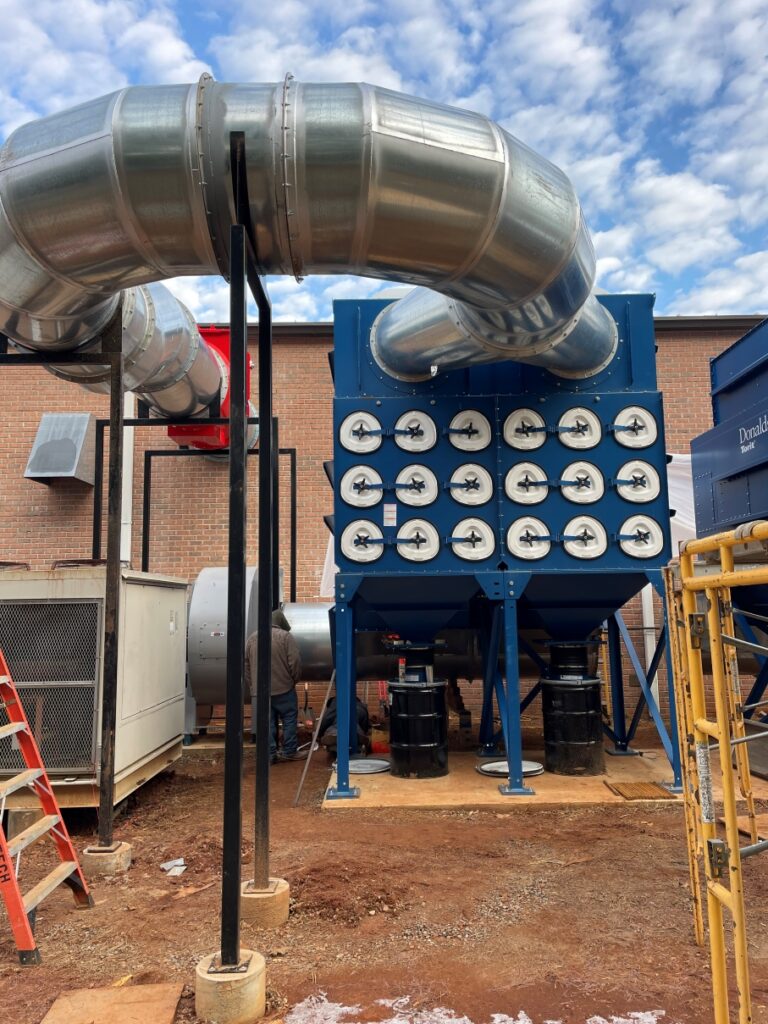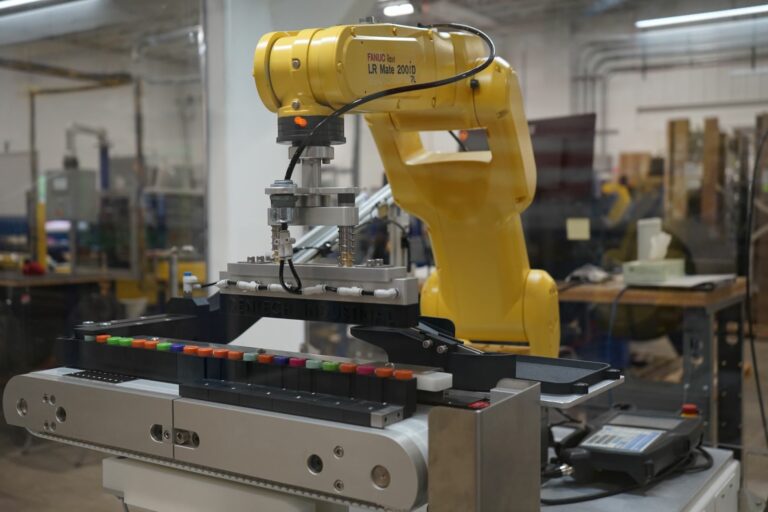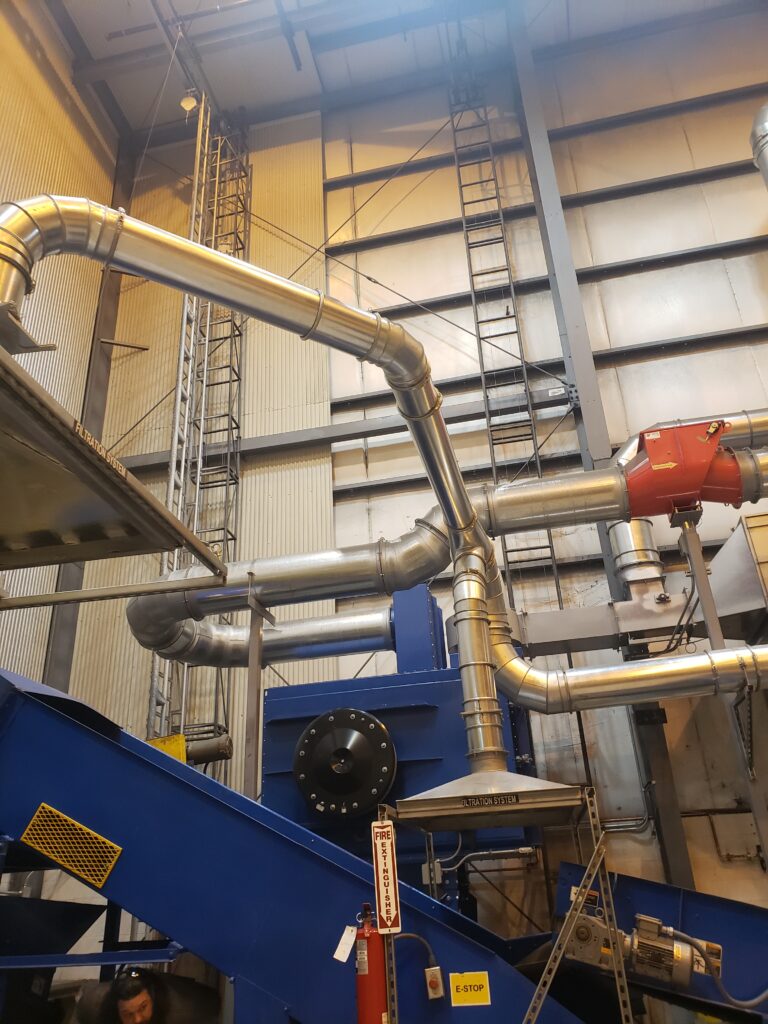Dust collection systems play an important part in minimizing dust exposure and contributing to a safe environment for employees. Dust collection systems offer many benefits, including:
- Protecting employees from pollutants in the workplace
- Helping facilities meet air quality standards and government regulations
- Reducing health, safety, and insurance costs
- Increasing cleanliness in the facility
- Decreasing operational housekeeping costs
Equipment in a dust collection system must be sized properly for the system to work efficiently. Here’s a guide on how to select the proper dust collector for your facility’s needs.

How a dust collector works
Dirty air enters the dust collector and passes through filter media. Dust collects on the outside of the filter. Clean air passes through the filter and out to the fan. Then clean air might be taken outside the facility or conveyed back into the facility.
Filters are cleaned by shooting compressed air through the filter to loosen dust off the filter media. Dust falls down into a hopper below the filters.
That’s the basic rundown of how a dust collector operates. But how do you choose the right collector for your facility?

How to size a dust collector
The size of the dust collector is one of the most important considerations in air quality system design. An appropriately sized dust collector is determined by the application and particulate volumes.
Three important elements in sizing a dust collector are cubic feet per minute, area of filter media, and air-to-media ratio.
1. Cubic feet per minute
Cubic feet per minute (CFM) measures how much air the dust collector can move each minute. CFM requirements are determined by the size of the enclosure that must be cleaned and the volume of dust produced.
Generally, source capture methods require lower CFM compared to ambient air capture methods. This is because ambient air capture must turn over air for the entire facility.
The speed at which particulates are produced matters, too. High-production facilities that generate large volumes of fume or dust will need to turn the air over faster than facilities that generate relatively fewer particulates.
A dust collector with higher CFM requires larger fans and motors, which results in higher upfront costs and higher energy costs over the life of the machine.
2. Area of filter media
Area of filter media is the total filter media in the dust collector, measured in square feet. The higher the CFM and the more particulates generated in the facility, the more air filtration media will be needed.
3. Air-to-media ratio
Air-to-media ratio (also called filter velocity) is the amount of air going through each square foot of filter media each minute. To calculate this, divide the amount of airflow (CFM) by the amount of filter media in the dust collector. For example, a dust collector with airflow of 4,000 CFM and 2,000 square feet of filter media has an air-to-media ratio of 2:1 (4,000 divided by 2,000).
Generally, applications that produce large volumes of particulates require more filter media compared to applications that produce fewer particulates. The more particulates in each cubic foot of air coming through the collector, the lower the air-to-media ratio will need to be. Particulates are more concentrated in source capture systems, so they will usually require a lower air-to-media ratio than ambient systems.
Why is the right air-to-media ratio important?
If you have more filter media than is really needed, costs for the dust collector may be higher than needed. But cutting back isn’t the way to go, either. Having less filter media than is needed can have serious adverse impacts on filter life, equipment life, and the overall efficiency of your system.

Additional considerations
A few more details about the facility and production process may affect dust collector selection:
- Continuous vs. intermittent duty – Does the dust collector need to run continuously during operating hours or only intermittently?
- Filter life – Does the facility have certain needs for filter life length?
- Airstream conditions – Is the airstream stable or does it change?
After we have these details and calculations for CFM, area of filter media, and air-to-media ratio, we can determine the size of the collector and how many filters the system needs to maintain the ratio.
Partnering with an expert makes selecting dust collectors much easier. A DenTech Industrial dust collection specialist can help you determine the optimal air-to-media ratio for your application type, the size and volume of dust you produce, and your facility’s characteristics. Getting the air-to-media ratio right will ensure that your air quality system delivers the performance you expect while minimizing your equipment and operating costs.
Want more info on sizing dust collection systems?
Download our free guide that includes information on each part of a dust collection system, related articles, and project examples.

Our team is here to help!
Contact us with any questions about dust collection systems. Our experts can help you determine the appropriate equipment for your facility.




